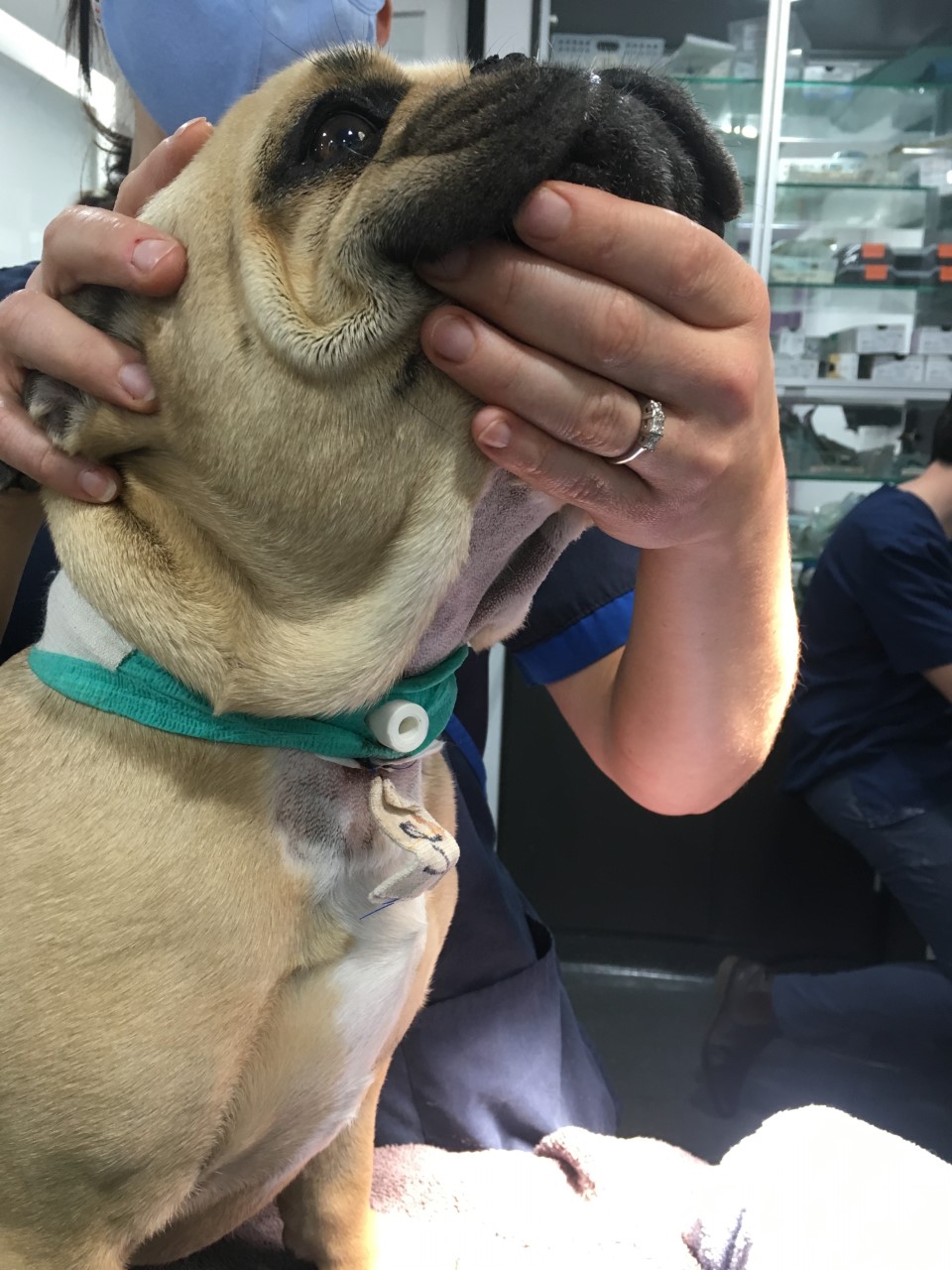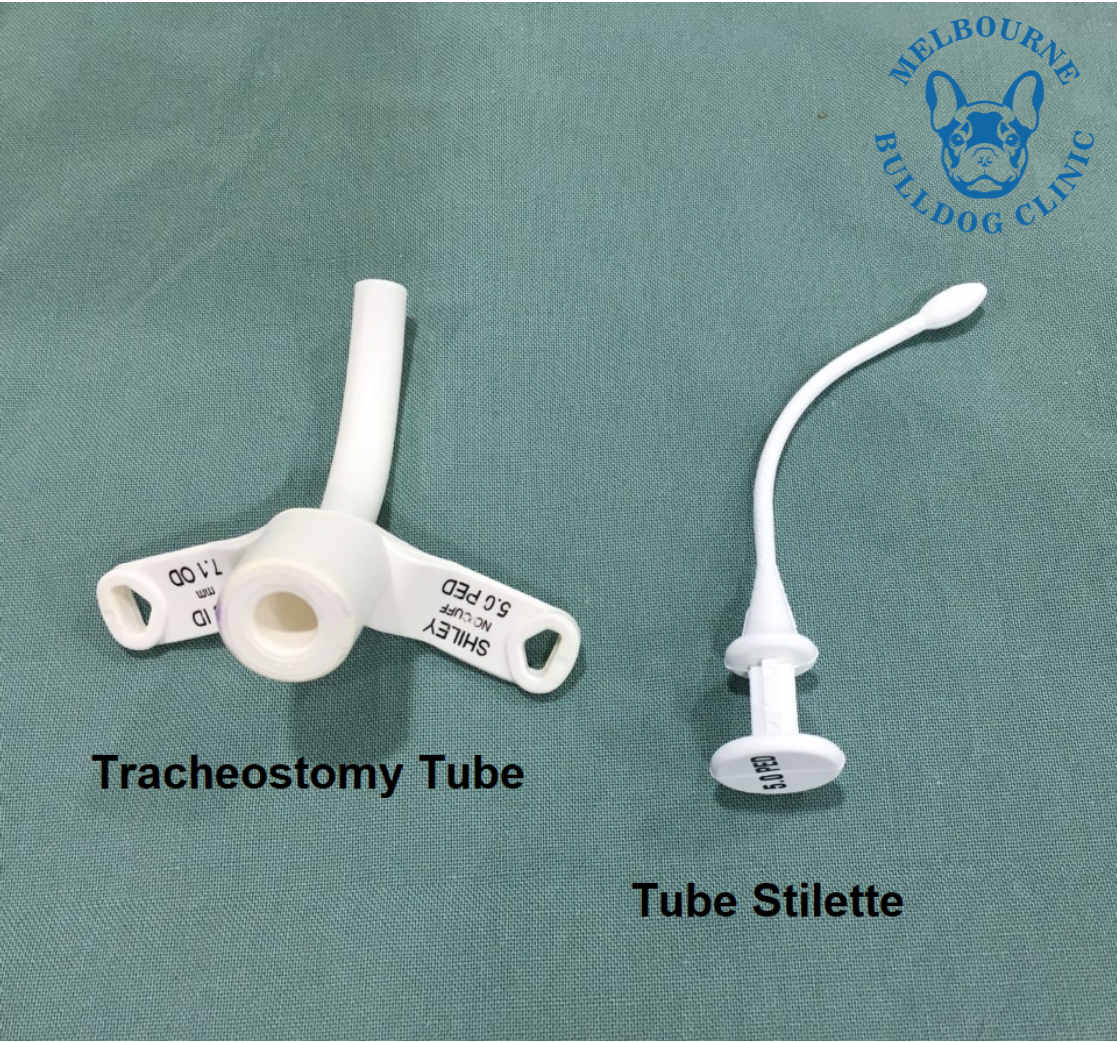Placing a tracheostomy tube is occasionally a decision that needs to be made in an emergency situation, and is an understandingly scary and confronting situation for most owners. However, when required, it can be lifesaving. I have put together a series of pictures and videos to help you understand what the procedure is, what your dog will look like with a tube in place, and the care involved after tube placement. Please email us or call for a chat if you have further questions.
What is it?
A temporary tracheostomy is the surgical insertion of a breathing tube directly into the trachea (windpipe) in order to bypass the upper airway. The tube protrudes from the underside of the neck, and is left in place anywhere from 24 hours up to 3-4 days.


